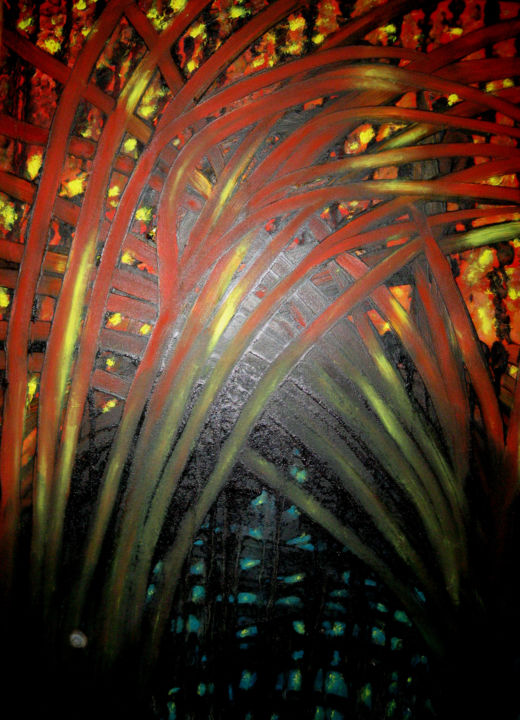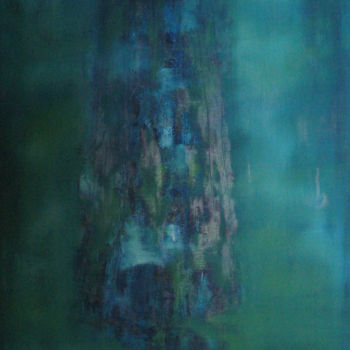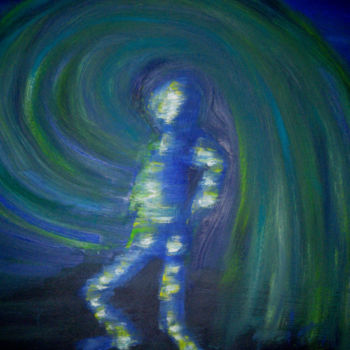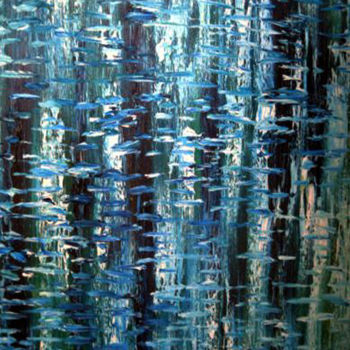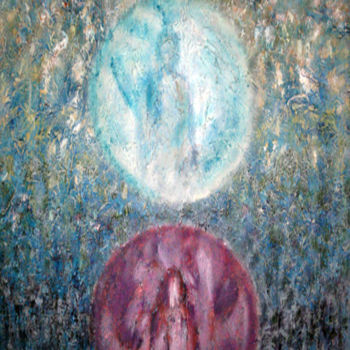Narcissus trapped in his inner forest Painting by G. Orrico
Not For Sale
Sold by G. Orrico
-
Original Artwork
Painting,
Oil
on Canvas
- Dimensions Height 23.6in, Width 11.8in
- Categories Paintings under $1,000 Outsider Art
by virtue of much imagining;”
Luís de Camões, Richard Zénith transl.
Narcissus was a young man renowned for his beauty, which attracted many nymphs, who he despised.So they prayed for the gods vengeance: Narcissus would love, but never would be loved.
One day, Narcissus approached from a spring of clear water; he saw his own reflection and, immediately, fell in love with it, without realizing that it was the reflection of his own person. Since then, his only desire was to find the vision that he had seen on the water. However, tired of vainly seeking his love, Narcissus lay down on the grass by the pond and let himself die. His body disappeared and a flower grew, the flower that, today, we call narcissus.
This myth explains what love is: the beloved is the image of our reflection, the part we need to feel complete and that we imagine, entwined in our interior forest, but to find the dearly loved , it is necessary that we know ourselves.
I was born in Lisbon.My father was portuguese, but part of my mother’s familly is italian.
My first passion in life, in what concerns art production, was Literature.I studied Literature in a portuguese university, I did a master’s degree in Compared Literature and I taught in a secondary school and in an university.I discovered oil painting when I was studying History of Art (as sculpture, architecture). At that time - my adolescence - I realize I liked every form of art expression.I understood that my life would be richer, if I surrounded myself of beauty (later, I would know that all human beings are sensitive to aesthetics), because it is related with the pleasure of the senses and of the soul). I had, too, the clear perception that who makes art has something to tell. I could learn so much! I had the heritage of Humanity.I was fascinated by Michelangelo, Da Vinci, the divine proportion, introduced in the painting, by the Baroque painters, the game between light and shadow, the movement, the sensuality, the bright colors, by co Delacroix, who gave us “Liberty leading the people”; by the clouds of Turner, by the “impression” of Monet, by the existentialist expressionism of Munch and the symbolism of Klimt; by the abstractionism of Kandinsky,by the irreverence of Dalí, the audacity of Picasso, by Pollock, and by so many others, that made world change, because art is the expression of the essence of the human being, of his imaginary, of his values, of his complaint, of his fight, of his incessant search of himself to achieve his deepest desires. Painting became a travel; I could/can forget the space and the time I was/am living and penetrate a world of pure evasion.Suddenly, I felt that situations I was experiencing made me enter in the universe of reflection and I began to paint motivated by my feelings and my thoughts about circumstances, relationship, society, concept of personality, reality, good and bad as relative, perishable constructions.. I created a dreamlike universe, based in the “short stories” that are the thought behind the canvas, translated in color, suggesting depth, subjects that are common to all mortals and that are closely related with the human condition and to what makes us alike. In my paintings, the absence of defined forms or mimesis are the representation of thbeing and the possibility of seeing reality of several angles,making invitations to different interpretation, because I know who sees recreates the complexity of human a painting that is not mine anymore.
-
Nationality:
PORTUGAL

- Date of birth : 1960
- Artistic domains:
- Groups: Contemporary Portuguese Artists

